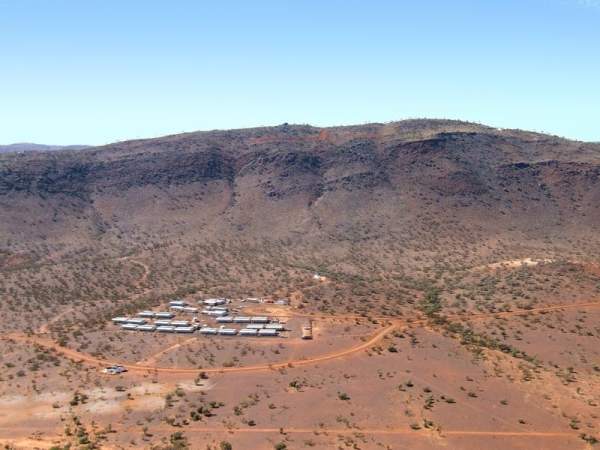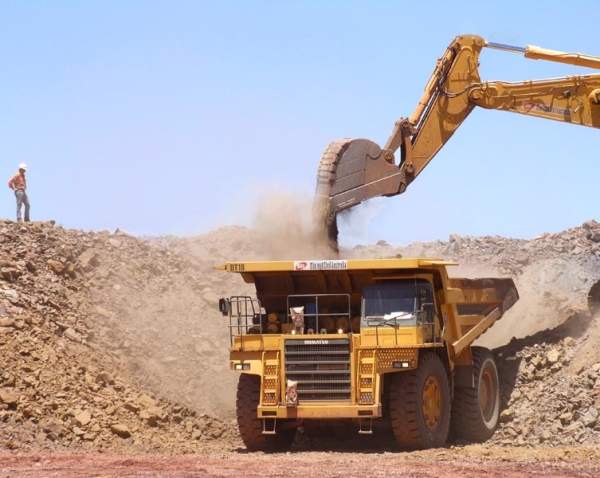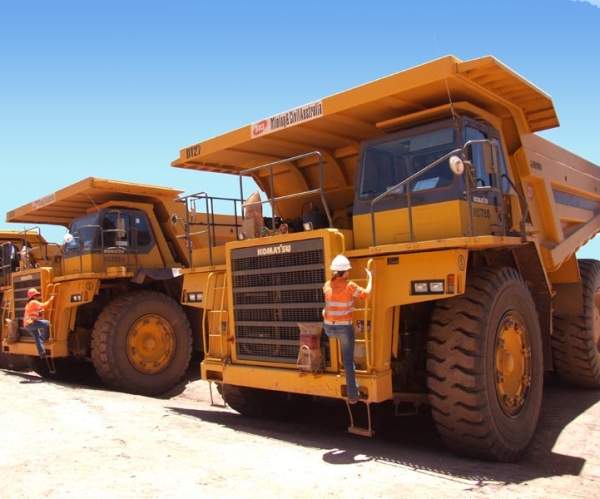Jack Hills Iron Ore project is owned and operated by Crosslands Resources, a 50-50 joint venture between Murchison Metals and Mitsubishi Development.
It is the only property developed by Crosslands to date. It is situated 400km northeast of Geraldton in the mid-west region of Western Australia.
The mine contains premium grade iron ore. Stage one of the development of Jack Hills has created more than 330 direct and indirect jobs.
The mine’s expansion as part of stage two development is expected to create a few hundred jobs. The expansion is scheduled for completion in 2013-14.
Mineralisation, geology and reserves of the Jack Hills Iron Ore project
Most of the iron ore mineralisation at the property occurs as magnetite and hematite. The mine is located in an Archaean-aged greenstone belt in the Murchison geological province. Mining is being carried out at three deposits – Jack Hills, Brindal and Detrital deposits.
Jack Hills is the main deposit containing banded iron formation (BIF). The Brindal deposit, located 3km south of it, contains massive hematite mineralisation.
The detrital deposits were discovered during the second phase of a $30m exploration programme in 2009. The mineralisation is accordingly classified into banded iron formation, massive iron mineralisation and detrital iron deposits.
The mine is estimated to contain 3.2 billion tons of mineral resources at an average grading of 32.3% Fe as per September 2010 estimates. The resources include 2.87 billion tons of BIF at a cut-off grade of 22% Fe, 235mt of massive iron mineralisation at a cut-off grade of less than 50% Fe and 118mt of detrital iron deposits at a cut-off grade of 22% Fe.
The reserves are estimated to be 96.6 million tons (mt) of direct shipping ore (DSO) and 435mt of beneficiation feed ore (BFO).
Expansion of the Western Australian mine
Crosslands proposed the Jack Hills Expansion Project to tap the unexplored resource potential of the mine. The expansion will involve the development of open pits and construction of an integrated landform for the disposal of mine waste and tailings; a processing plant; a 173MW power plant; accommodation facilities; pipelines for supply of natural gas and water; sewage treatment facility and access roads.
The expansion will extend the total mine life (including period of closure) to 39 years. Geraldton and the mid-west region in general are expected to gain from the growth opportunities created by the expansion.
The feasibility studies of the expansion project are at an advanced stage.
The mine can, currently, produce up to 2mt of iron ore lumps and fines per annum. The expansion will increase the production capacity to 35mt per annum.
Open-pit mining
The property is being mined by low cost open pit methods. The mining began in November 2006. First shipment of the ore was accomplished in February 2007. Iron ore is produced currently in two varieties – lumps and fines, at a mining rate of one million tons per annum. The mine ships approximately 1.8mt of iron ore annually, including 64% Fe grade lumps and 61% Fe grade fines.
Jack Hills Expansion will include two pits at Jack Hills and Brindal with surface areas of 750ha and 120ha respectively, to be mined at the maximum rate of 55mt of feed ore per annum.
Ore processing at Crosslands Resources’ mine
The processing plant includes crushing and screening equipment and concentrators. Lumps are produced by a jig plant. Magnetite concentration is used to produce magnetite concentrates while gravity concentration is used to produce hematite concentrates.
Transport and handling at the Jack Hills Iron Ore project
The mined lumps and fines are crushed, screened and transported by triple road trains to storage and transfer facility at the Port of Geraldton which is located 640km from the mine. Deliveries are made from this storage and transfer facility.
The current production at Jack Hills has been restricted due to issues related to logistics. A new deepwater port at Oakajee and integrated railway infrastructure are proposed to be developed to support the increase in production. Oakajee is located 25km from Geraldton.
Oakajee Port and Rail (OPR), a joint venture established by Crosslands, Murchison and Mitsubishi, will develop the port as well as the rail infrastructure.
The Western Australian State Government entered into an exclusive agreement with OPR to construct the port and rail network in March 2009. A bankable feasibility study being carried out on the proposal is expected to be completed in 2011.
The port will have an initial handling capacity of 45mtpa of bulk exports and accommodate vessels of capacity up to 180,000t. The railway infrastructure will include a new 500km long, heavy haul standard gauge rail line. The state government has committed to fund A$339m towards the common user infrastructure of the project.
The expansion will position the mid-west region of Western Australia as the second leading iron-ore province in Australia. Pilbara is currently the leading iron ore province in the continent.
The port and rail project will benefit many producers in the mid-west region, including Crosslands. The project is critical to the development of the mid-west region given the fact that 97% of the iron ore produced in Australia is from Western Australia.
Environment
The Environment Protection Authority (EPA) recommended the Ministry for Environment to approve the expansion project in August 2011, in a response to the application submitted by Crosslands.
The addition of rail infrastructure will reduce the number of haul trucks used for road transportation of the ore and thus reduce the adverse environmental impact caused.











